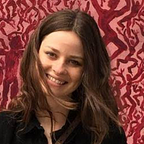Introducing family tracing
Right now, a global network of Red Cross Red Crescent staff and volunteers are searching, finding and reconnecting displaced families that have lost touch through migration, conflict and disaster. It’s a life-changing service.
But in the wake of mass migration and disaster, demand is growing. The digital team are working with our UK family tracing teams, finding new ways to meet demand and reduce waiting lists.
We will be blogging about this work as we do it. To start I wanted to explain a bit about the service and how we are approaching the project.
How does family tracing work?
The Red Cross Red Crescent Movement is made up of 192 National Societies, such as the British Red Cross. Each national society offers slightly different services depending on the needs of vulnerable people in their country. But one service that unites them is International Family Tracing.
Here at the British Red Cross, people who have lost touch with their families come to us, tell us everything they know about who they are looking for and where they might be. Recounting the final moments they last saw their families can be very traumatic, and each case is handled with great care by volunteer caseworkers.
If we have enough information, such as a last known address, we can start an “active search”. That involves sending the case file to the National Society in the country we think the relative may be. Their volunteers will go out in the field, whether that’s a remote Afghan village or a detention centre in Brussels. They take hand drawn maps, notes, photos and names, looking for the client’s lost relative.
Tracing can take years, and clients don’t always get the news they are hoping for. But there are happy endings too. You can read more about the experience of people tracing their families here.
How are the digital team getting involved?
The British Red Cross currently faces long waiting lists in their tracing services, leaving staff and volunteers overwhelmed. Service users, caseworkers, volunteers and service managers have been identifying inefficiencies, and have lots of ideas to build a more sustainable service, many of them digital.
My role as a service designer is to bring all this insight together, so we can start testing, refining and ultimately building these ideas for real.
The first thing we’ve done is start a short 3-week discovery to understand the problems facing the service and decide where to focus.
What are we going to do next?
We are almost coming to the end of our discovery phase and are putting our insights together. Our discovery phase was a mix of desk research, expert interviews, casework and interview shadowing.
We made a call before starting discovery that we wouldn’t talk to people with lived experience of losing or tracing their families in this early stage. Recounting the trauma of losing your family is tough, and not a small ask. We wanted to be more focussed in what we were asking before starting these conversations, and work from the research that had already been done with service users. We will be sharing our findings from discovery next week and prioritise which aspect of the service to focus on.
With a narrowed scope, we will move on to an Alpha phase where we generate and test solutions. Testing is how we reduce risk and ensure that what we build will actually work, and that people will use it.
Stay tuned.
